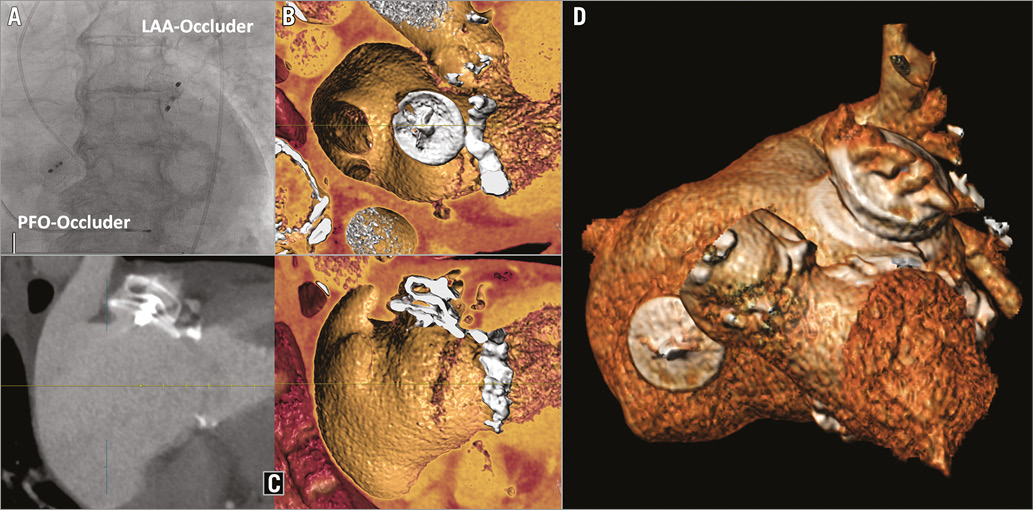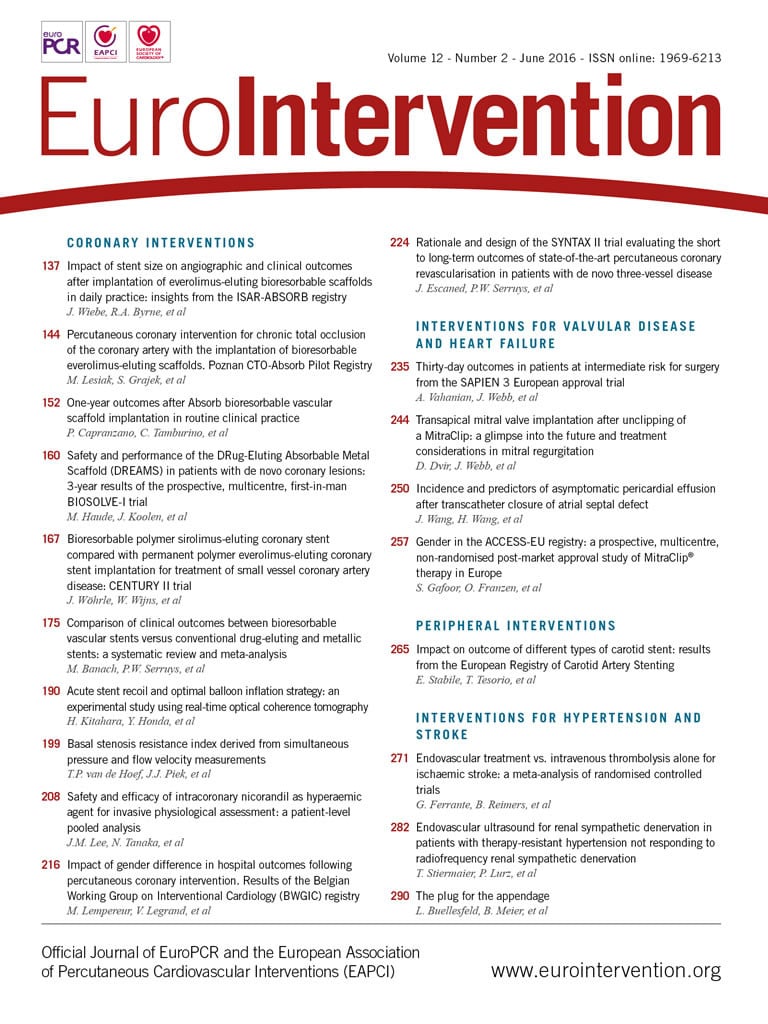

Interventional left atrial appendage (LAA) closure is an emerging treatment for the prevention of atrial clot formation in patients with atrial fibrillation and contraindication for oral anticoagulation. An 82-year-old patient with paroxysmal atrial fibrillation and previous gastrointestinal bleedings underwent implantation of a 28 mm AMPLATZER™ Cardiac Plug (ACP) (St. Jude Medical, St. Paul, MN, USA) within a 24 mm LAA, as well as device closure of a patent foramen ovale grade III (Panel A). The ACP consists of a lobe, which anchors within the atrial appendage, and a disc, which seals the ostium of the LAA (pacifier principle). Multislice computed tomography multiplanar reconstruction and three-dimensional volume rendering demonstrated the successful ACP implantation with optimal disc position one month later (Panel B, Panel C, Moving image 1). However, due to the irregular shape, as well as the thin wall structure of the LAA with a low radial counterforce, implants within the LAA body are able to alter the LAA geometry (Panel D, Moving image 2). This results in inhomogeneous wall stress which may lead to wall injury and subsequent pericardial effusion, which is reported in up to 5% of cases undergoing interventional LAA closure.
Conflict of interest statement
B. Meier receives consulting fees from St. Jude Medical. The other authors have no conflicts of interest to declare.
Supplementary data
Moving image 1. Three-dimensional reconstruction - internal view.
Moving image 2. Three-dimensional reconstruction - external view.
Supplementary data
To read the full content of this article, please download the PDF.
Three-dimensional reconstruction - internal view.
Three-dimensional reconstruction - external view.

